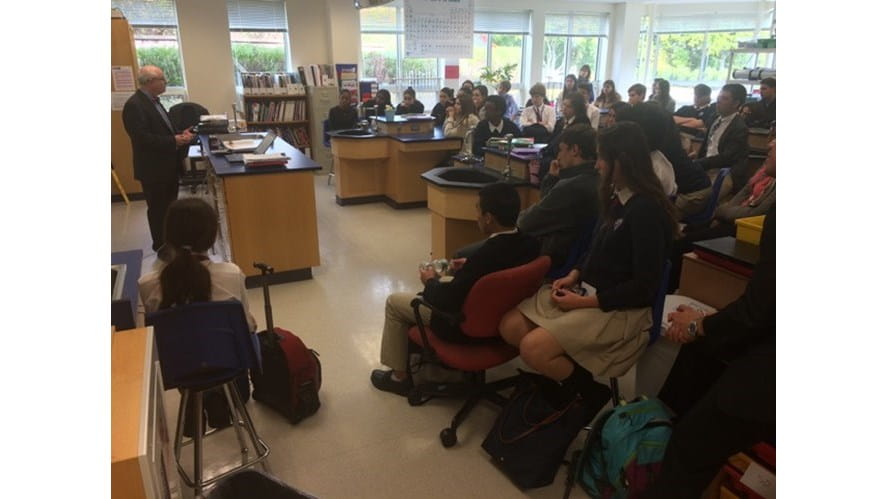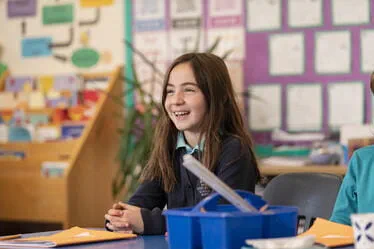BISB Students Bring the Real World to their Science Classroom Learn more about the BISB science department's efforts to bring real world learning to the school's science classrooms and laboratories. BISB high school students took their chemistry learning from textbooks and lab experiments and into the real world Tuesday, learning from a research chemist at Novartis, one of the top pharmaceutical companies in the world. Read on for an account of the visit- and the motivation for real world learning- from BISB's Head of Science Mr. Murphy.
Students in Years 11-13 were fortunate to enjoy a talk from Dr. John Reilly, senior research chemist at Novartis, the Swiss-based firm who in 2013 were the biggest selling pharmaceutical company in the world.
Dr. Reilly works primarily with cutting-edge chemical analysis and purification techniques, including the innovative ‘Open-Access’ system, which allows research chemists to receive rapid analysis on their product without having to leave their own laboratory bench.
At BISB, students follow a pathway in chemistry which develops their understanding of chemical analysis as they progress through the stages of school; from basic separation techniques in primary, to paper chromatography and distillation in the middle-school, to mass and IR spectroscopy in year 12 and finally UV-Vis and NMR in year 13.
In the IGCSE and IBDP (both chemistry and biology), students learn about a wide range of organic molecules. It was great to hear Dr. Reilly refer to some of these compounds (in particular the fascinating zwitterions and chiral enantiomers) as major players in the development of modern medicines.
In today’s scientific society it is imperative that students see a link between the theory they learn in school science lessons and it’s practical importance for humanity. At BISB, we believe that drawing on experts in the local community is a great way to achieve this.
On one hand the aim is for students to convince themselves that what they are learning is relevant to the real world; this will have an inspiring and motivational effect and will aid them through their studies.
However there is a bigger picture to consider, where the role of a science teacher becomes one as a facilitator who can help students develop the ability to read and learn about scientific developments with an understanding, yet skeptical mindset. It is our hope at BISB that the students who leave our doors at the end of Year 13 are confident, thoughtful and knowledgeable scientists who have the ability and determination to make a real difference to society.
Who knows, maybe some of them may one day be working with Dr. Reilly in developing the next life-saving pharmaceutical compound!
Thanks again to Dr. Reilly for his wonderful and inspiring talk. The Science department will next welcome guest speaker Tommy Doyle, a senior figure in the world of scientific publishing, who will be speaking to High School students on Monday, November 17th.
-- T. Murphy, Director of Science

